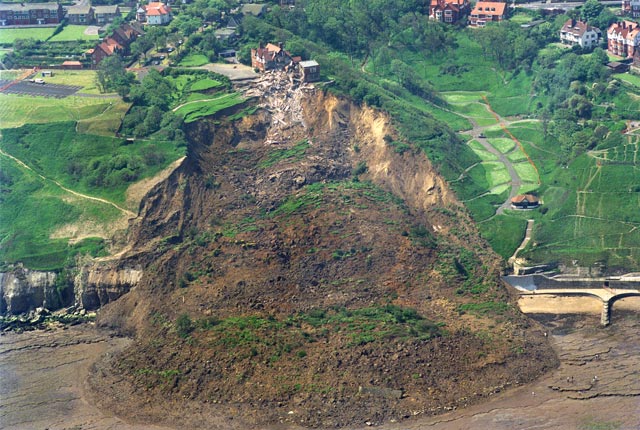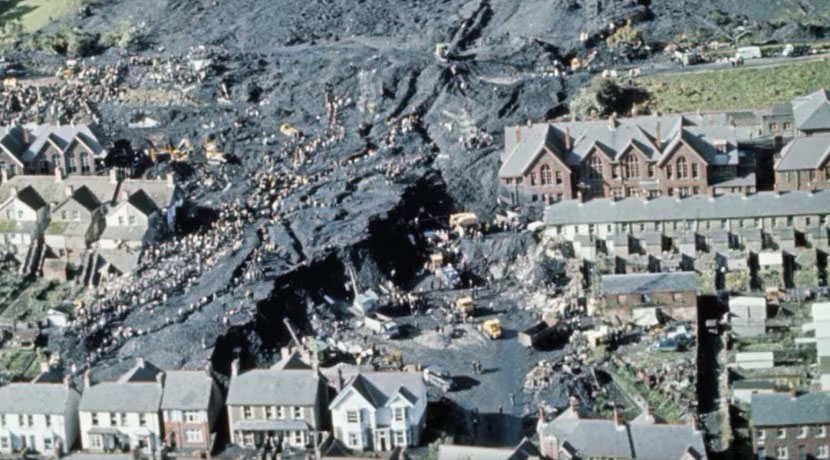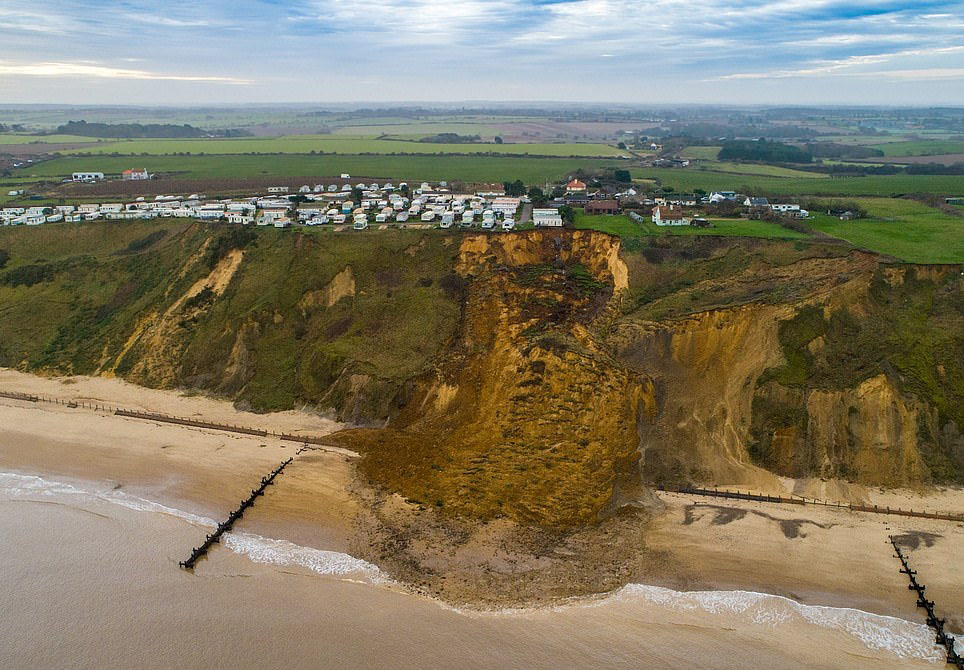NATURE → Landslides
I really would not like to get burried by a massive slide of rock or mud!

Holbeck Hall Landslide, Scarborough
Source: British Geological Survey
Background
A landslide is a mass movement of material, such as rock, earth or debris, down a slope. They can happen suddenly or more slowly over long periods of time. Factors causing landslides include heavy rainfall (leading to the saturation of the ground), erosion of the base of a slope or changes in material strength through weathering.
Landslides are classified by their type of movement viz., falls, topples, slides (rotational and translational) and flows. All can be extremely dangerous as many thousands of tons of materials can be involved. Major landslides can also lead to considerable loss of life.

Aberfan Landslide, 9:13am the 21st of October 1966
116 children and 28 adults died when 150,000 tonnes of coal waste slid down a hillside, engulfing Pantglas Junior School and a number of neighbouring houses
Source: https://www.itv.com/news/wales/2020-10-20/aberfan-disaster-marking-54-years-since-disaster-struck-the-south-wales-village
Conclusions
Check carefully for the potential of landslides.

Massive coastal landslide, Trimingham, North Norfolk, January 6, 2020
This landslide was not the result of coastal erosion but due to heavy rainfall - pore water pressure destabilised the slope resulting in sliding
Source: Geoengineer
See: https://www.geoengineer.org/news/massive-landslide-struck-north-norfolk-uk